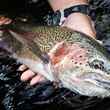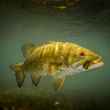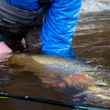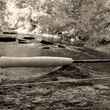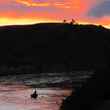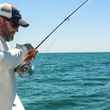Raritan Bay is home base for many of New York and New Jersey’s fishermen. In season fishermen leave the many marinas that dot the bay shore of Staten Island, Monmouth and Middlesex county and head out to the bay in search of striped bass, bluefish, summer flounder (fluke) and other game fish. In order to have a successful day on the bay, anglers look for baitfish. Find the bait, you find the gamefish. The predominant baitfish in Raritan Bay is bunker (formally known as Atlantic Menhaden), both large adults and immature small bunker that we call “peanuts”. Without bunker in the water, you might as well play golf.
Ranked right up there with the Chesapeake and Delaware bays, Central New Jersey’s Raritan Bay is one of the predominant nurseries/estuaries for Atlantic Menhaden stocks. Bunker spawn out at sea and the fry get caught up in the currents and ride them into the back bays and estuary areas where they stay the summer and grow larger until fall. The adult bunker are herring-like fish which swim together in very large schools and feed on micro-organisms like algae, copepods and plankton. They are a lynchpin in the ecology of the bay – converting the micro organisms into flesh and becoming a protein enriched package for our carnivorous fish, marine mammals and marine birds.





